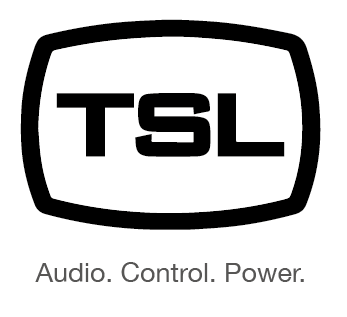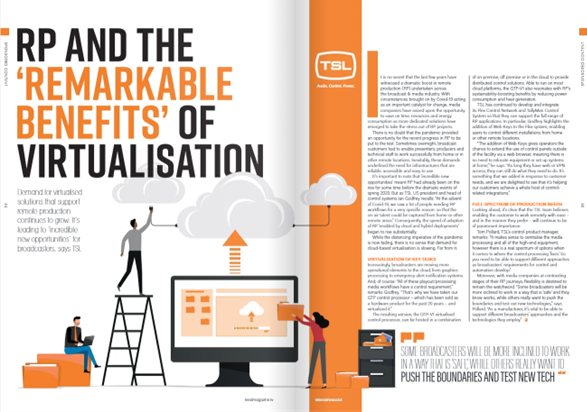Remote Production and The Remarkable Benefits of Virtualisation
FEED Magazine – Summer 2023
Demand for virtualised solutions that support remote production continues to grow. It’s leading to ‘incredible new opportunities’ for broadcasters.
It is no secret that the last few years have witnessed a dramatic boost in remote production (RP) undertaken across the broadcast & media industry. With circumstances brought on by Covid-19 acting as an important catalyst for change, media companies have seized upon the opportunity to save on time, resources and energy consumption as more dedicated solutions have emerged to take the stress out of RP projects.
There is no doubt that the pandemic provided an opportunity for the recent progress in RP to be put to the test. Sometimes overnight, broadcast customers had to enable presenters, producers, and technical staff to work successfully from home or in other remote locations. Inevitably, these demands underlined the need for infrastructures that are reliable, accessible, and easy to use.
It’s important to note that ‘incredible new opportunities’ meant RP had already been on the rise for some time before the dramatic events of spring 2020. But as TSL US president and head of control systems, Ian Godfrey recalls: “At the advent of Covid-19, we saw a lot of people needing RP workflows for a very specific reason: so that the on-air talent could be captured from home or other remote areas.”
Consequently, the speed of adoption of RP ‘enabled by cloud and hybrid deployments’ began to rise substantially. While the distancing imperative of the pandemic is now fading, there is no sense that demand for cloud-based virtualisation is slowing. Far from it.
VIRTUALISATION OF KEY TASKS
Increasingly, broadcasters are moving more operational elements to the cloud, from graphics processing to emergency alert notification systems. And of course: “All of these playout/processing media workflows have a control requirement,” remarks Godfrey. “That’s why we have taken our GTP control processor – which has been sold as a hardware product for the past 20 years – and virtualised it.”
The resulting version, the GTP-V1 virtualised control processor, can be hosted in a combination of on-premises, off-premises or in the cloud to provide distributed control solutions. Able to run on most cloud platforms, the GTP-V1 also resonates with RP’s sustainability-boosting benefits by reducing power consumption and heat generation. TSL has continued to develop and integrate its Flex Control Network and TallyMan Control System so that they can support the full range of RP applications.
In particular, Godfrey highlights the addition of Web Keys to the Flex system, enabling users to control different installations from home or other remote locations. “The addition of Web Keys gives operators the chance to extend the use of control panels outside of the facility via a web browser, meaning there is no need to relocate equipment or set up systems at home,” he says. “As long they have web or VPN access, they can still do what they need to do.
It’s something that we added in response to customer needs, and we are delighted to see that it’s helping our customers achieve a whole host of control-related integrations.”
FULL SPECTRUM OF PRODUCTION NEEDS
Looking ahead, it’s clear that the TSL team believes enabling the customer to work remotely with ease – and in the manner they prefer – will continue to be of paramount importance. Tom Pollard, TSL’s control product manager, remarks: “It makes sense to centralise the media processing and all of the high-end equipment, however, there is a real spectrum of options when it comes to where the control processing ‘lives.’ So you need to be able to support different approaches as broadcasters’ requirements for control and automation develop.”
Moreover, with media companies at contrasting stages of their RP journeys, flexibility is destined to remain the watchword. “Some broadcasters will be more inclined to work in a way that is ‘safe’ and they know works, while others really want to push the boundaries and test out new technologies,” says Pollard. “As a manufacturer, it’s vital to be able to support different broadcasters’ approaches and the technologies they employ.”
Some broadcasters will be more inclined to work in a way that is ‘safe’, while others really want to push the boundaries and test new tech.
This article was first published in Feed Magazine, Summer 2023 edition, pages 34-35: https://online.bright-publishing.com/view/115545586/34/


